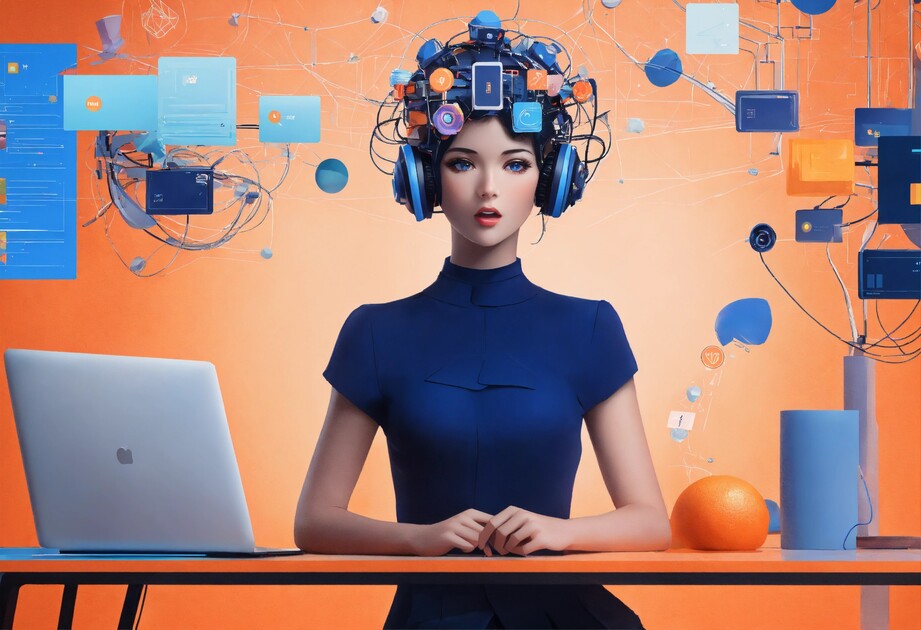AI: A Catalyst for Change, Not an End to Jobs
 Raj Darshan Pachori
Raj Darshan Pachori
The rise of Artificial Intelligence (AI) has triggered widespread apprehension about the future of jobs and the world economy. Headlines often predict mass unemployment as AI automates tasks once reserved for humans. While the fear is not unfounded, history offers a reassuring perspective. Over the last 50 years, each wave of technological innovation has sparked similar concerns but ultimately resulted in economic growth, productivity gains, and the creation of new types of jobs.
AI and the Fear of Job Loss
AI is poised to revolutionize industries, automating routine and repetitive tasks. This will inevitably lead to the displacement of certain roles. However, the fear of tech-induced unemployment is not new. When personal computers emerged in the 1970s, many feared they would render clerical workers obsolete. Similarly, the rise of the internet in the 1980s and mobile phones in the 1990s sparked fears of job losses in traditional industries.
Yet, these innovations fueled the global economy. For example, while automation reduced manufacturing jobs, it simultaneously created millions of roles in IT, software development, and digital marketing. In 1970, the world had approximately 1.6 billion jobs; by 2020, this figure had grown to 3.5 billion, driven by new industries and technologies. The digital revolution, powered by the internet, gave rise to professions like web developers, app designers, and cybersecurity experts, which were unimaginable a few decades earlier.
Here is the quick snapshop of growth in global jobs with rising population (Source: United Nations and World Bank).
Year | World Population (in Billions) | Estimated Global Jobs (in Billions) |
1970 | 3.7 | 1.6 |
1980 | 4.43 | 1.8 |
1990 | 5.32 | 2.1 |
2000 | 6.14 | 2.7 |
2010 | 6.92 | 3.2 |
2020 | 7.79 | 3.5 |
50 Year Growth | 111% | 119% |
Similarly, AI is expected to create new economy jobs in areas such as AI development, data analysis, robotics maintenance, and ethical governance. A World Economic Forum report predicts that while 85 million jobs may be displaced by AI by 2025, 97 million new roles will emerge, representing a net gain.
The Need to Unlearn and Relearn
Preparing for an AI-driven future requires a willingness to adapt. The most valuable skill in the age of AI is the ability to unlearn outdated methods, learn new technologies, and train in emerging fields. For instance, as AI automates routine accounting tasks, accountants who upskill in data analytics and financial forecasting will remain indispensable.
Governments, businesses, and educational institutions play a crucial role in this transition. Workforce development programs, reskilling initiatives, and affordable access to education can help individuals navigate the changing job landscape. At the same time, individuals must take ownership of their learning journeys, embracing lifelong learning and cultivating skills in creativity, critical thinking, and emotional intelligence—areas where humans excel over machines.
The Bigger Picture
Rather than fearing AI, it is crucial to view it as a tool for economic growth and productivity. By automating repetitive tasks, AI allows humans to focus on innovation and problem-solving. This shift can lead to higher wages, better working conditions, and improved quality of life.
History shows that while old economy jobs may fade, the overall number of jobs continues to grow. The key lies in adaptability. By embracing change and investing in skills for the future, individuals and societies can harness AI’s potential to create a more prosperous and equitable world.
In conclusion, AI will transform the world of work, just as personal computers, the internet, and mobile phones have done before. The future of jobs depends not on resisting change but on learning to thrive in it.
Subscribe to my newsletter
Read articles from Raj Darshan Pachori directly inside your inbox. Subscribe to the newsletter, and don't miss out.
Written by

Raj Darshan Pachori
Raj Darshan Pachori
Technology Leader. Worked as Director of Engineering for Tyfone CDI. Currently researching and exploring Gen AI to drive productivity improvement in Product Engineering. 22+ yrs of exp and 10+ yrs in leadership roles.